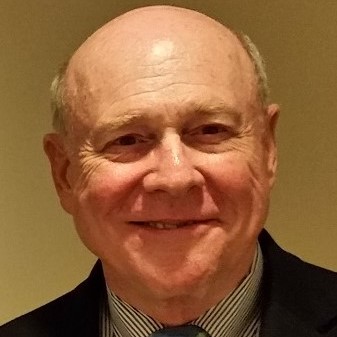Why it can be a good idea for hospitals to stand up to government policy

Healthcare finance executives in the United States can take a lesson from an eye-opening book by Ted Giovanis, FHFMA, MBA, Beyond fear: How I fought the feds for six years — and won.
In this book, Giovanis, a long-standing member of HFMA’s Maryland Chapter, chronicles how he identified an error in an arcane Medicare formula for paying hospitals and then took the error into litigation. The error resulted in hospitals being underpaid nearly $4 billion, which this litigation ultimately recovered.
The hospital industry was unaware of the error before Giovanis, a self-employed consultant, asked CMS a general question about its budget-neutrality (BN) calculation and data the agency was using in its inpatient prospective payment system (IPPS). CMS’s initial response gave Giovanis reason to believe the agency was in error in its approach. In a follow-up comment, Giovanis suggested to CMS it was duplicating the BN effect in its calculation. CMS’s nonresponse to this comment reinforced Giovanis’s suspicions that he had indeed uncovered a major error in the agency’s approach.
The source of the error

The CMS error involved a duplication in the BN calculation as it applied to the rural floor (RF), which ensures no urban hospital in a state is paid less than the rural hospitals in that state. CMS initially made the BN adjustment to the IPPS payment rate via the overall BN calculation. When CMS made the first year’s calculation going from Year 1 to Year 2, that calculation was correct. However, in the second and subsequent years, CMS used the same formula, causing the BN adjustment to remove the entire amount attributable to the RF when only the incremental effect between each year should have been removed. This caused a duplicating effect. The agency ultimately changed the adjustment by modifying the area wage index (AWI), which is new each year and essentially stopped the duplicating effect. However, the amounts that had been previously and inappropriately removed remained.
It was understandable no one in the industry noticed CMS’s error because it involved only a small amount of money when it initially occurred. But the duplicating effect over time ultimately resulted in underpayments to hospitals of $1.1 billion per year.
In the end, five factors needed to be understood to identify CMS’s error:
- The Laspeyres Index used in the BN calculation1
- The Medicare acute-care hospital IPPS
- The Medicare AWI, including its underlying data and how it is calculated
- The method CMS uses to calculate the BN and the underlying data
- The RF and how it is applied and calculated
Bureaucratic shortcomings
In his book, Giovanis suggests the case he brought against CMS showed misplaced incentives among high-level career officials in CMS’s bureaucracy, which influenced their interest in the matter, its resolution and the settlement process. It’s often said in litigation, “If you have good facts, you argue the facts, and if you don’t have good facts, you argue technicalities.” Ultimately, in the lead case brought against CMS, Cape Cod Hospital v. Sebelius, the government argued technicalities.
CMS’s defense
There was only a single comment letter submitted regarding the error. So the government’s case initially rested on having that letter eliminated from the record on technical grounds. Then the ambiguous wording of the government’s brief at the U.S. District Court led the judge to think the error was fixed.
But it wasn’t. CMS had only changed the location of where it applied the RF BN, but it failed to restore the excess monies that had been removed — a point missed by the district court.
The case was immediately appealed to the District of Columbia Circuit Court.

From beginning to end, this was a six-year battle that eventually led to the district court’s decision being overturned by the D.C. Circuit Court in a 3-0 ruling.
Once Cape Cod Hospital v. Sebelius was decided affirmatively for the hospital plaintiffs, it took more than a year to develop the settlement agreement and get the appealing hospitals paid what they were due.
The case took from 2006 to 2012 to appeal, resolve and get the initial appealing hospitals paid. The CMS error totaled $4.0 billion for all hospitals nationally, and the nearly 2,500 appealing hospitals in Cape Cod were paid about $3.0 billion. It is unknown whether the other hospitals appealed or were paid what they were due.
This case presents several important lessons for hospitals and health systems, the most important of which is that the government can be wrong, and when it is, the only right thing to do is to challenge it.
Other lessons learned include the following:
- Challenging the U.S. federal government is problematic because the government often will be disinclined to make concessions, and those it is willing to make tend to be influenced by the who and the what of its incentives.
- Be prepared for many scenarios and unexpected developments, and adapt.
- Recognize judges have their limits because of their inadequate understanding of statistics, economics and the immense complexities of healthcare finance in the United States.
- Maintain a humble and courteous demeanor throughout the effort: Uncontrolled egos can inflict wounds.
At the outset of any large legal initiative, make sure its leaders (i.e., those who envisioned and launched it) are clearly identified and able to retain control of it, and be prepared to reinforce their leadership role among additional parties who might sign on to the initiative.
The information needed to understand the BN calculation is not always easily accessible. Moreover, it is generally not well-understood or modeled. Thus, most people do not venture into the arcane world of BN or the mechanisms that underpin the IPPS payment rates. Even today, many may not understand the error and how it occurred. This point underscores not only the risk that important errors can be missed but also the need for industry watchdogs who can closely follow regulatory policy and stand ready to challenge regulatory agencies such as CMS on behalf of the industry.
This book also provides a real-life example for those seeking to litigate against the federal government. It provides insights into the processes required for major litigation, and it offers a clear view of what is involved in undertaking such an action.





